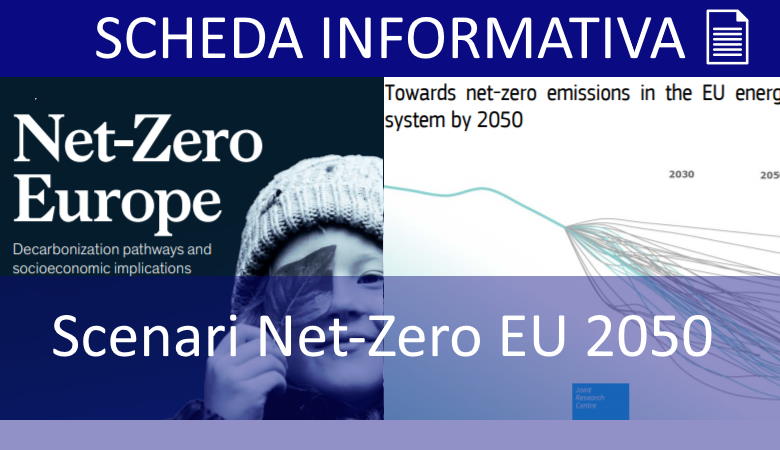Two studies supported by the European Commission and McKinsey analyze the scenarios towards Net-Zero EU
Two recent studies explore the different scenarios that allow climate neutrality to be achieved by 2050, in line with the ambitions of the European Green Deal, evaluating how different approaches can affect the cost and the economic and social impact. The two reports provide indications for the implementation of policies for the climate and energy strategies of the European Union but also useful considerations on the dynamics that we will face in the coming years and decades.
The report of the Joint Research Center of the European Commission “Insights from scenarios in line with the 2030 and 2050 ambitions of the European Green Deal” presents a comparison between 8 scenarios which reach a reduction of over 50% of greenhouse gas emissions by 2030 compared to 1990 e 16 scenarios aiming at climate neutrality by 2050, results in line with the ambitions of the “Green Deal europeo”.
Between 2017 and the 2019, 26 Government or private studies have analyzed further 60 scenarios for the energy transition e, although the extensive literature confirms its technical feasibility, the costs and the criticality of the requirements are subject to discussion. Effectively, energy transition paths generally do not assess the technical feasibility of energy systems at a very detailed level and rather tend to offer strategic perspectives. The JRC report, selecting and comparing 24 scenarios in relation to the intermediate objectives (2030) and long-term (2050), identifies common and divergent elements in energy system developments al 2030 e 2050.
For example, as a common element of all scenarios in the field of buildings, the report predicts, al 2030, until the 35% of replacing gas and diesel boilers in buildings with heat pumps and district heating until reaching, in the 2050, a share of 40-60% of the energy demand of buildings met by electricity.
The McKinsey Report Net-Zero Europe. Decarbonization pathways and socioeconomic implications presents the results of a search on practicable routes e cost-effective towards a Net-Zero Europe. The analysis identifies the optimal uses of over 600 levers to reduce emissions in 75 sub-sectors e 10 regions, evaluating their impact in employment and socio-economic terms.
The report highlights the following main conclusions:
- Europe can achieve net zero emissions a no cost.
- The transition can produce a net gain of 5 millions of jobs.
- The different sectors will have to reduce emissions in parallel but will reach net-zero at different stages (energy production in half 2040 given the availability of technologies, transport in the 2045, the constructions at the end of the years 2040, industry in 2050 and therefore agriculture)
- More than half of the reduction in emissions can be achieved with mature and rapidly adopted technologies.
- Energy systems and land use should be reconfigured (by 2050, the consumption of oil, gas and coal should decrease by over 90% compared to a doubling of the energy demand covered, however, for over 90% from renewable sources, compared to 35 percent current. Circa 30 Mha of marginal lands could be used to produce biomass).
- Decarbonising Europe will cost less if the burden is shared effectively.
- It is necessary to invest almost one thousand billion euros a year; the cost savings will offset the increase in investments.
References:
- Tsiropoulos I., News W., Tarvydas D., Ruiz Castello P., Towards net-zero emissions in the EU energy system by 2050 – Insights from scenarios in line with the 2030 and 2050 ambitions of the European Green Deal, EUR 29981 IN, Publications Office of the European Union, Luxembourg, 2020, ISBN 978-92-76-13096-3, doi:10.2760/081488, JRC118592 download abstract
- In April P., Engel H., van Gendt G., Helmcke S., St. Jerome, Nauclér T., Pinner D., Walter D., Witteveen M. – Net-Zero Europe. Decarbonization pathways and socioeconomic implications, November 2020, McKinsey & Company download summary






